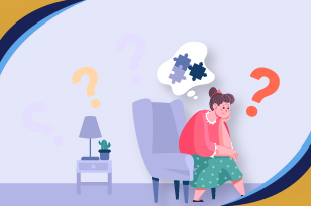Have you ever confronted someone about their bad behavior, and they end up making you feel guilty or question your own self? If so, you have experienced Darvo. It is a manipulation tactic in which the abuser twists the truth and turns the tables on the victim. This term was originally coined by Jennifer Freyd in 1997, and it stands for Deny, Attack, and Reverse Victim and Offender.
However, many people around us don’t understand the tactics of Darvo until it’s too late. Understanding Darvo helps you respond effectively when someone tries to manipulate you or blame you.
Read this article to know more about Darvo, the stages of Darvo, how it affects a person’s mental health, and what treatments are available to treat victims of Darvo.
What is Darvo?
Darvo is a manipulation technique that is used to avoid responsibility for all wrongful doings and blame the victims or the supporters of the victim. This technique is often used in abusive relationships, intimate partner violence, post-separation abuse, the workplace, and legal situations. Additionally, understanding Darvo is very important because the abuser will not admit their mistakes nor change them. It causes long-lasting effects on the individuals, such as causing several
like depression, anxiety, or panic attacks.
What are the stages of Darvo?
The Darvo technique comprises the following:
1. Deny
The first step that can be used by an abuser is to deny what they did! It makes you question your sanity. This isn’t just a simple dispute; it’s a clear rejection of your reality. They will make you believe that nothing has ever happened, and you are just assuming everything.
It’s really important to stick to the truth that you know exactly.
For More Information Click the Link Below:
Here are some of the common denial examples:
- You have seen someone else
- How can I do that?
- Why are you overreacting to the things that never happened?
- Why are you being sensitive?
2. Attack
The abuser uses this tactic to pressure the victim by being aggressive, arguing, or speaking loudly. They make you doubt yourself and why you doubted them, and accuse you that you are lying. The abuser continuously threatens the victim by insulting, using their weak points, questioning their character, or using gaslighting tactics so that they remain silent.
However, try to avoid the conflict and stay calm so that you can stick to your point.
Here are some of the common attack examples:
- Are you crazy? How can you question me like this?
- Stop being dramatic.
- The perpetrator brings past mistakes to make you stay silent.
3. Reverse Victim and Offender
This is the most damaging technique of darvo, as the abuser swaps their role by pretending to be the victim, and makes the other person the abuser. They make the others feel like they are unfairly targeted just to gather sympathy and support from others. This shift in blame affects the victim emotionally, psychologically, and makes them question their self-esteem.

Here are some of the common examples of reverse victim and offender:
- You are attacking me without reason
- How could you do this to me? I am the one who is hurt here.
How does Darvo Impact Mental Health?
Darvo negatively impacts the mental health of individuals who have lived in an abusive environment. As it makes the individuals traumatized, self-doubt, and anxiety.
Get To Know More About:
Emotional Intelligence (EI) And Its Relationship With Mental Disorders
Here is how Darvo impacts mental health:
1. Anxiety
People who have suffered through all the hardships become emotionally drained when the abuser attacks them by using their weak points or by attacking their character. They become emotionally unstable and have anxiety attacks, and they feel like they are walking on eggshells with an abuser. They experience excessive worry and chronic stress that cannot be controlled and leads to generalized anxiety disorder or post-traumatic stress disorder.
2. Depression
The victim becomes so drained that they become silent at the end, isolating themselves. They stop themselves from checking on the other person or confronting them and suffer alone, which impacts their mental health and leads to depression. The constant blame and abuse also cause feelings of guilt and shame. After some time, it also leads to major depressive disorder.
3. Confusion and gaslighting
The gaslighting tactics make the victim question their own senses, perceptions, and beliefs. They have seen everything themselves, but the abuser makes them doubt, which might lead them to think they might have delusions. The constant denial makes their thoughts delusional, and they cannot trust their own self. Over time, they become overly dependent on the answer about the clarity of things because they think that they might be assuming or might be wrong.
How to Spot DARVO in Real Life?
Darvo is not only present in relationships, but can also be seen in different aspects of life where a person wants to avoid their fault.
Learn Something New:
Anosognosia, A Neurological Condition That Denies Any Disorder Symptoms
Here are some of the common real-life examples:
1. In a personal relationship
In an intimate relationship, you confronted your partner about a text message that you had seen on their phone. They simply deny it by saying What are you talking about? How can you go through my phone? Why do you always doubt me? They constantly deny and attack the victim. In the end, they finally come to the point where they say, So what? I can’t even talk to my friends?
2. In a workplace
In a workplace, the manager pressures you or behaves badly with you. You go to your HR manager or boss to complain about them. However, the manager denies everything and attacks by saying you are not good at managing tasks. They deny and then attack you and portray themselves as the victim.
3. In legal situations
If you are in a court hearing and the perpetrator uses Darvo tactics, such as attacking your character, making you ashamed in front of everyone. They shift the blame to gain sympathy and pretend that he is the one who is harmed and hurt.
How to heal from Darvo tactics?
Emotional abuse from Darvo is extremely damaging as it severely affects mental health. However, it can be managed through combinations of medications and therapies.
Medications
A mental healthcare expert prescribes medication after knowing all your medical history, family history, and by doing some questionnaires and then recommends medication.
Here are some medications that often work best when used in combination with therapy, these include:
- Antidepressants
- Anti-anxiety medications
- Antipsychotic medications
Psychotherapies
Psychotherapy or talk therapy is considered the most effective treatment for individuals who have suffered from Darvo.

Some of the most common forms of therapy that can be used are as follows,
1. Cognitive Behavioral Therapy
Cognitive behavioral therapy is the most efficient therapeutic approach to dealing with anxiety and depression. CBT helps identify the negative thoughts that affect emotions and behaviors, and learning to change them into helpful thought patterns.
CBT can help in challenging negative thoughts to help manage several problematic areas associated with Darvo. These include perceived fear, social isolation, self-blame, trauma, stress, and silence.
2. Somatic Therapy
It’s a form of psychotherapy that helps focus on the connection between mind and body. The traumatic event remains stuck in the mind as fight, flight, or freeze. This therapy helps individuals that trauma is stored in the body. A mental healthcare expert helps a person tune into their “felt sense,” or the physical sensations that are linked with traumatic memories. Somatic therapy techniques help them to stay active by doing walking, exercise, which eventually reduces the stress that is stored in the body. However, somatic therapy is an evidence-based treatment to help individuals reduce trauma.
3. Dialectical behavior therapy
DBT is also a form of Cognitive behavioural therapy. DBT is for those people who are struggling with emotional distress. It is based on the idea that two opposing things can co-exist. In therapy, it means that you can accept your thoughts and emotions and still move on from them by changing them into productive thoughts and emotions. For people who have suffered from Darvo tactics, DBT helps manage distressing emotions that direct one’s behaviors. Additionally, DBT also helps individuals to learn the skills of emotional regulation and distress tolerance.
4. Group therapy
It’s a form of psychotherapy that helps to reduce feelings of loneliness and provides a sense of belonging and togetherness. It involves a secure, stable, and caring environment where a small group of people gather together and share their life journey with each other. It provides a structure in our lives and makes us learn, heal, and grow. Group therapy is an evidence-based modality that can be helpful for people in many ways. Individuals who want to heal from Darvo and struggle with abuse, anxiety, trauma, and divorce can get help from group therapy.
Are You Interested in Knowing? :
How Psychiatric Support Can Help Executive Dysfunction
Get Expert Care at Orange Coast Psychiatry
Is mental health taking a toll on your everyday life? Or do you feel emotionally drained as a Darvo victim? At Orange Coast Psychiatry, we have an expert team of professionals who provide a wide range of mental health treatments. Whether you are suffering from depression, anxiety, trauma, GAD, or any other mental health disorder, we are here to help.
Our dedicated experts provide customized care according to the strength, preference, and severity. We also provide medication and therapy management via in-person and telehealth.
Consult our experts now!
Last thoughts
Darvo is a manipulation tactic that can be used to avoid all the wrongdoing by simply denying. The word Darvo stands for Deny, attack, and Reverse victim often. It causes long-lasting effects on life, such as relationships at the workplace and more. It also causes mental health disorders such as PTSD, depression, anxiety, trauma, and self-blame. Many people remain in toxic relationships and toxic environments for a long time, which eventually damages their self-esteem. They become so dependent on the abuser and think that they might really have some problem, and the abuser is right.
However, it can be treated professionally with the help of medication and therapies such as antipsychotics, antidepressants comorbid with therapies like CBT, DFBT, somatic, and group therapy.
Victims of Darvo after the treatment can move forward in life after overcoming all traumas and rebuilding their true selves. Therapies help provide emotional freedom and empowerment to live a happy life.


















